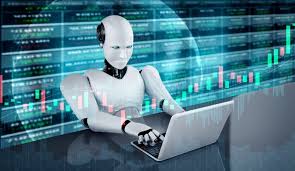
In the ever-evolving landscape of financial markets, technological advancements have consistently reshaped how traders operate. One such forex robot that has gained significant traction in recent years is the Forex robot, also known as an expert advisor (EA) or automated trading system. These automated systems promise to revolutionize currency trading by executing trades on behalf of the trader based on predefined criteria and algorithms. But what exactly are Forex robots, how do they work, and do they live up to the hype?
What are Forex Robots?
Forex robots are computer programs designed to analyze the Forex market, identify trading opportunities, and execute trades automatically. They operate based on pre-set rules and algorithms, eliminating the need for human intervention in the trading process. These robots can be customized to follow various trading strategies, ranging from simple trend-following approaches to more complex algorithms based on technical indicators, fundamental analysis, or even machine learning algorithms.
How Do They Work?
Forex robots operate by continuously monitoring the currency markets for specific trading signals or patterns. These signals could be generated by technical indicators such as moving averages, MACD, RSI, or by fundamental factors such as economic news releases or geopolitical events. Once a trading opportunity aligns with the programmed criteria, the robot executes trades according to the set parameters, including entry and exit points, position size, and risk management rules.
Most Forex robots operate on MetaTrader platforms, such as MetaTrader 4 (MT4) or MetaTrader 5 (MT5), which are widely used by retail traders and brokers. Traders can either develop their own custom robots or choose from a plethora of commercially available ones offered by third-party developers. Additionally, some brokers provide their clients with access to proprietary automated trading solutions.
Advantages of Forex Robots
- Emotion-Free Trading: One of the primary advantages of Forex robots is their ability to eliminate emotional biases from trading decisions. Human traders are prone to emotions such as fear, greed, or overconfidence, which can lead to irrational trading behavior and poor decision-making. Robots, on the other hand, operate purely based on logic and predefined rules, ensuring disciplined execution of trades.
- 24/7 Operation: Forex markets operate round the clock, spanning different time zones globally. Unlike human traders who need rest, Forex robots can monitor the markets and execute trades 24 hours a day, 7 days a week, without the need for breaks or sleep. This continuous operation allows for the exploitation of trading opportunities that may arise at any time, even when the trader is unavailable.
- Backtesting and Optimization: Forex robots enable traders to backtest their trading strategies using historical market data. By simulating past trading conditions, traders can evaluate the performance of their robots and fine-tune their parameters to optimize profitability. This feature helps in identifying robust trading strategies and minimizing the risks associated with live trading.
Challenges and Limitations
- Over-Optimization: While backtesting is a valuable tool for strategy development, it also carries the risk of over-optimization, where the trading strategy performs exceptionally well on historical data but fails to generalize to live market conditions. Traders must strike a balance between optimizing their robots for past performance and ensuring adaptability to future market dynamics.
- Market Conditions: Forex markets are inherently dynamic, characterized by changing trends, volatility, and geopolitical events. While some robots may perform well in certain market conditions, they may struggle or even incur losses during periods of high volatility or unusual market behavior. Adaptability and risk management are crucial aspects of successful automated trading.
- Technical Issues and Risks: Like any software-based system, Forex robots are susceptible to technical glitches, connectivity issues, or even programming errors that could result in unintended trades or losses. Moreover, reliance on automation exposes traders to the risk of system failures or cyber attacks, underscoring the importance of robust security measures and backup plans.
Conclusion
Forex robots represent a paradigm shift in currency trading, offering the potential to streamline operations, mitigate human errors, and capitalize on trading opportunities with unmatched speed and efficiency. However, while the allure of automation is undeniable, it’s essential for traders to approach Forex robots with a balanced perspective, understanding both their capabilities and limitations. Like any tool, the effectiveness of Forex robots ultimately depends on the competence of the trader, the quality of the trading strategy, and the ability to adapt to evolving market conditions. As technology continues to advance, the role of automation in Forex trading is likely to expand, shaping the future landscape of financial markets.